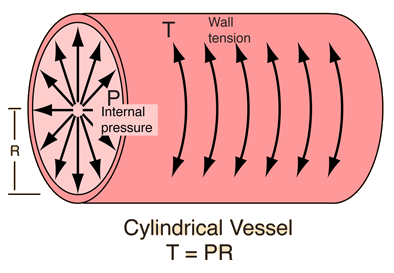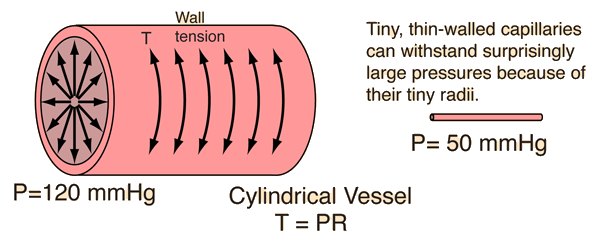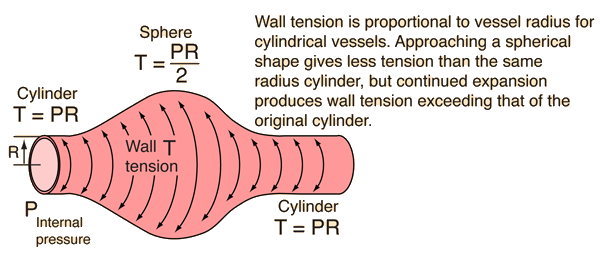COPD or Emphysema
The disease of the lungs called emphysema or chronic obstructive pulmonary disease (COPD) results in the enlargement of the alveoli of the lungs as some are destroyed and others either enlarge or combine. The disease is one of the destructive effects of long-term smoking, but sometimes occurs in non-smokers. If the normal inhalation process inflates the alveoli to a larger radius, the implications of LaPlace's law are that the wall must have lost much of its elasticity. Normally it would take twice the pressure to inflate a constant tension membrane to twice its radius. Typically, the wall tension of the healthy alveoli is determined by the surface tension of the liquid which coats them, and with a uniform coating (called a surfactant), they will all inflate to a similar radius. The enlarged alveoli in the emphysema patient imply less elastic recoil during the process of exhalation. Exhalation requires effort from the diaphragm and in advanced stages of the disease, a patient will not be able to blow out a match.

Besides the loss of elasticity of the alveolar walls, the larger size of the compartments implies a smaller surface area for a given volume. Because the oxygen exchange from the air to the blood is proportional to the area of the exchange membrane, this diminishes the rate of oxygen transfer.
LaPlace's law concepts
References
Canadian Lung Association
Healthline COPD Reference
| HyperPhysics***** Mechanics ***** Fluids | R Nave |


